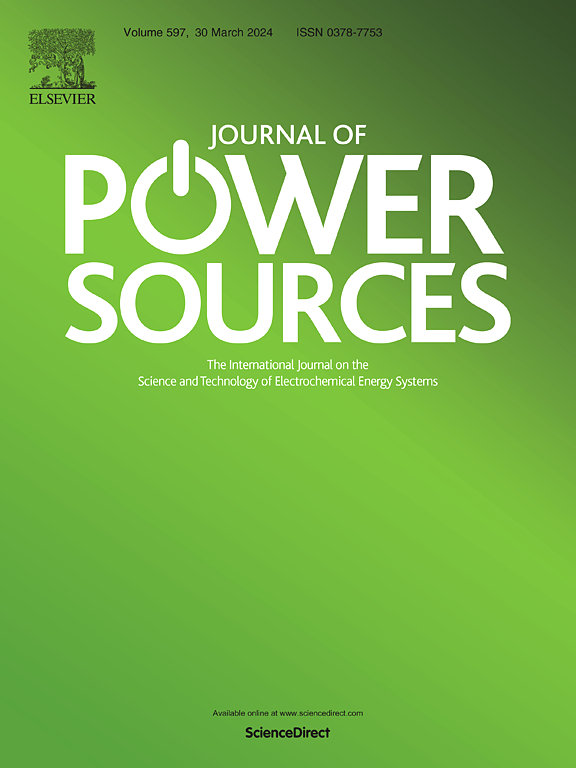A monolayer self-assembled bridging design enabling cycling stability of quasi-solid-state lithium metal batteries
IF 8.1
2区 工程技术
Q1 CHEMISTRY, PHYSICAL
引用次数: 0
Abstract
Quasi-solid-state or solid-state lithium-metal batteries have emerged as a promising candidate for next-generation energy storage systems, due to their remarkable potential to achieve ultrahigh energy densities and superior safety. However, achieving effective interfacial contact between solid-state electrolytes and electrodes remains a critical challenge, restricting their electrochemical performance. Herein, a dual-reactive siloxane agent is introduced into an in-situ polymerized polymer electrolyte as a bridging promoter, enabling ultra-conformal interfacial contact with rapid ion transport kinetics at Li metal anode. This strategy transforms the inactive LiOH layer on the lithium metal surface into Li–O–Si bonds, achieving both in-situ grafting and self-assembly. Subsequently, the secondary reactive site undergoes ring-opening copolymerization with the precursor electrolyte. Thus, this strategy facilitates a seamless interfacial connection between the electrolyte and lithium metal anode, optimizing ionic conductivity and significantly enhancing the air stability of Li metal anodes. The resulting Li@Si//LiFePO4 full battery displays remarkable cycling stability, with negligible capacity loss over 600 cycles. This straightforward and practical interfacial modification strategy presents an innovative solution to overcome the interfacial challenges in solid-state lithium-metal batteries.
一种单层自组装桥接设计,实现准固态锂金属电池的循环稳定性
准固态或固态锂金属电池由于具有实现超高能量密度和优越安全性的显着潜力,已成为下一代储能系统的有希望的候选者。然而,在固态电解质和电极之间实现有效的界面接触仍然是一个关键的挑战,限制了它们的电化学性能。本文将双反应硅氧烷剂作为桥接促进剂引入原位聚合聚合物电解质中,实现了Li金属阳极超保形界面接触和快速离子传输动力学。该策略将锂金属表面的非活性LiOH层转化为Li-O-Si键,实现了原位接枝和自组装。随后,二级反应位点与前驱体电解质进行开环共聚。因此,该策略促进了电解质与锂金属阳极之间的无缝界面连接,优化了离子电导率,显著提高了锂金属阳极的空气稳定性。由此产生的Li@Si//LiFePO4全电池显示出卓越的循环稳定性,超过600次循环的容量损失可以忽略不计。这种简单实用的界面修饰策略为克服固态锂金属电池的界面挑战提供了一种创新的解决方案。
本文章由计算机程序翻译,如有差异,请以英文原文为准。
求助全文
约1分钟内获得全文
求助全文
来源期刊

Journal of Power Sources
工程技术-电化学
CiteScore
16.40
自引率
6.50%
发文量
1249
审稿时长
36 days
期刊介绍:
The Journal of Power Sources is a publication catering to researchers and technologists interested in various aspects of the science, technology, and applications of electrochemical power sources. It covers original research and reviews on primary and secondary batteries, fuel cells, supercapacitors, and photo-electrochemical cells.
Topics considered include the research, development and applications of nanomaterials and novel componentry for these devices. Examples of applications of these electrochemical power sources include:
• Portable electronics
• Electric and Hybrid Electric Vehicles
• Uninterruptible Power Supply (UPS) systems
• Storage of renewable energy
• Satellites and deep space probes
• Boats and ships, drones and aircrafts
• Wearable energy storage systems
 求助内容:
求助内容: 应助结果提醒方式:
应助结果提醒方式:


